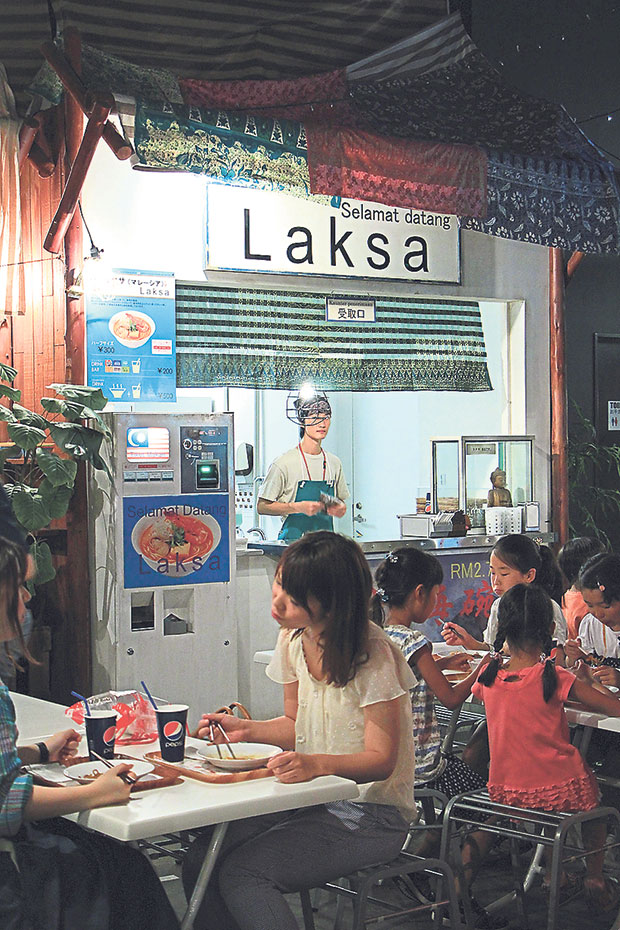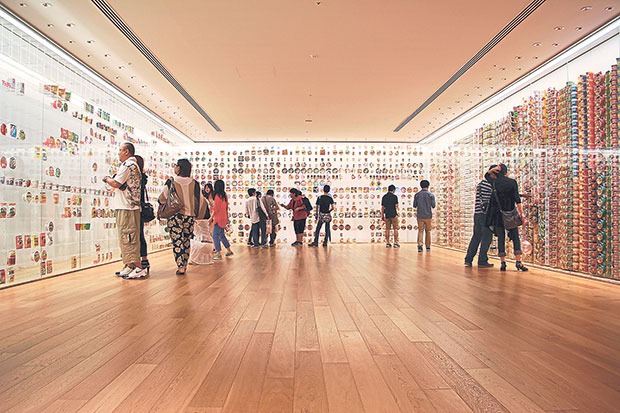YOKOHAMA, July 12 — Museums can have a reputation (justified or otherwise) for being boring, dusty and stuffy places. If you’re not a fan of history, art or science, chances are you’d agree with this assertion. But what about a museum that celebrates that most celebrated food of impoverished college students around the world — cup noodles?
Created by Taiwanese-Japanese inventor Momofuku Ando in 1958, when he discovered frying fresh noodles removed its water content and helped preserve them as the ultimate convenience food, instant noodles are a worldwide hit but nowhere more so than its country of origin. (Cup noodles were invented later, in 1971.)

According to The Economist, 86 billion servings of instant noodles were eaten around the world in 2005 alone. So if you’re a fan of cup noodles, you’d love the Cup Noodles Museum in Yokohama, a major commercial hub half an hour away from the Tokyo city centre. Cup noodles devotees flock to this whimsical and interactive museum to learn more about cup noodles, and to have some fun while they’re at it.
Yes, fun. Japanese museums are far from mausoleums of academia and dry knowledge. Take the Instant Noodles History Cube, one of the first displays you’ll encounter at the Cup Noodles Museum, for example. Gape in amazement at the instant cup noodles product line that began with Chicken Ramen. We’re not talking about 100 or so iterations of cup noodles here. Try over 3,000 different product packages – no wonder Ando’s cup noodles became a global phenomenon.

Today, Nissin (the company Momofuku Ando founded) remains one of the leading instant noodles manufacturers. When Ando created his first instant noodles, the chicken ramen, they were sold at shops at six times the price of fresh noodles, as they were a niche product. Now the reverse is true as affordable instant noodles are available everywhere in myriad flavours, while traditional noodles such as soba and udon are considered artisanal and more expensive.


The spirit of continuous learning and invention imbues the entire Cup Noodles Museum. After all, this is a place that serves, in part, to venerate a man who, even in his twilight years, never stopped trying to innovate. When he was 95 years old, Ando developed space ramen for astronauts!
Ando’s path to success was far from guaranteed, however. Born to a wealthy Taiwanese family in Japanese-era Taiwan, his parents died when he was young leaving him to be raised by grandparents. After World War II, Ando moved to Osaka and became a Japanese citizen. His first foray into business — a small merchandising firm — ended in failure when he was convicted of tax evasion.
After serving two years in prison, Ando bounced back with his next company that would become the world-famous Nissin. Post-war Japan was afflicted with a severe food shortage; the public were exhorted to eat bread made from wheat flour supplied by the United States. Entrepreneurial Ando saw an opportunity to mass produce pre-cooked instant noodles (his creation after months of trial and error) instead as he reasoned the Japanese would rather eat noodles than bread.

Hence it’s no surprise that the mantra of the museum is for everyone to be creative, even when facing adversity. Visit the recreation of the original shed where Ando developed his instant noodles at the age of 48 years old. The presentation of this man’s life story is meant not only to inspire but to challenge visitors to discover new solutions to everyday problems.
Of course, you are meant to be more than a passive spectator at the Cup Noodles Museum. Head to the Chicken Ramen Factory and make noodles by hand. Start by kneading, cutting, and steaming the wheat flour noodles. Next, replicate Ando’s original process of removing the water content by frying the noodles in hot oil. You can even take your freshly made ramen with you to enjoy at home.
At the My Cup Noodles Factory, you can create your own customised cup noodles by designing the package and selecting your choice of soup and toppings. You have four soup options and 12 toppings (choose four) to mix and match. There are no flavour combinations that are too weird — try mixing curry with kimchi and shrimp, if you like. In total, there are 5,460 possible flavour combinations!

Don’t forget to drop by the World Noodles Road Bazaar — a food court resembling an Asian night market with noodles from eight different countries including Malaysia! You can have laksa in Yokohama; of course, this is laksa-flavoured instant noodles, with some fresh ingredients thrown in for good measure.
When leaving the museum, you’d be forgiven for skipping the souvenir shop. However, if you overcome your fear of kitschy fridge magnets, you’d be rewarded with delightful and kooky cup noodles-shaped cakes and candles. Sure beats another postcard with Mt. Fuji in the background, right?
Cup Noodles Museum
2-3-4 Shinko, Naka-ku, Yokohama, Japan
Open Wed-Mon
10am – 6pm; Tue closed






















